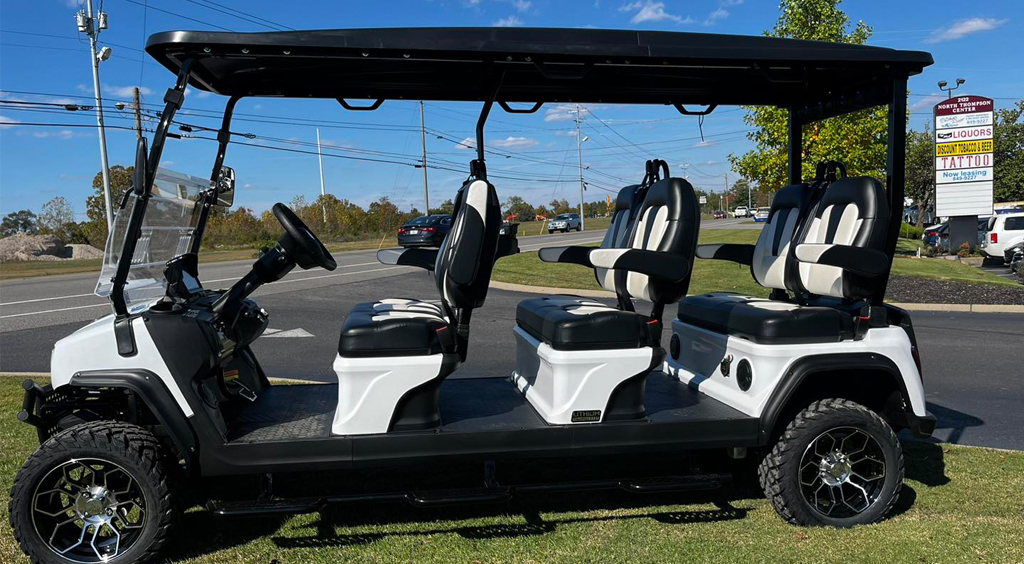
How far can a golf cart travel? It's a question that holds significant importance for golfers, resort owners, event planners, and those who rely on golf carts for transportation across various terrains.Understanding the range of a golf cart is crucial for maximizing its utility and efficiency, as the distance it can travel depends on factors such as the type of cart, battery capacity, and terrain.Golf carts have evolved from being mere tools for transporting golfers around a course to versatile vehicles used in a wide range of applications, from commercial and industrial operations to personal transportation. As the use of golf carts expands, so does the need to comprehend their range capabilities in different scenarios.
When examining the travel distance of golf carts, it's essential to consider various factors. The type of cart, battery technology, terrain, and maintenance all play crucial roles in determining how far a golf cart can travel on a single charge. Let's delve into these factors to gain a comprehensive understanding of the range of golf cart travel.
Battery Technology and Capacity
The type and capacity of the batteries installed in a golf cart significantly impact its travel range. Lead-acid, lithium-ion, and other advanced battery technologies are commonly used to power golf carts, each with its own set of advantages and limitations.
Lead-acid batteries have been the traditional choice for powering golf carts. While these batteries are affordable, their energy density and lifespan are relatively lower compared to newer technologies. This can result in reduced travel distances on a single charge, making lead-acid battery-powered carts more suitable for shorter trips.
On the other hand, lithium-ion batteries offer higher energy density and longer lifespans. Golf carts equipped with lithium-ion batteries can typically cover greater distances before needing a recharge, making lithium-ion technology a popular choice for manufacturers and owners aiming for extended travel ranges and improved efficiency.
Battery capacity, measured in kilowatt-hours (kWh), is also a critical factor in determining a golf cart's travel range. Golf carts with higher battery capacities can travel longer distances on a single charge compared to those with lower capacities. Moreover, newer developments in battery technology, such as rapid charging and improved energy density, are continuously enhancing the travel range of golf carts, further contributing to their overall efficiency and usability.

Environmental Factors and Terrain
In addition to battery technology and capacity, environmental factors and terrain greatly influence the travel range of a golf cart. Environmental conditions such as temperature, humidity, and altitude can impact the performance and efficiency of the batteries, ultimately affecting the cart's travel range.
Temperature, in particular, plays a significant role in determining the range of a golf cart. Extreme cold or hot temperatures can lead to decreased battery efficiency, resulting in reduced travel distances. Proper battery management and temperature control systems can help mitigate these effects, allowing golf carts to maintain optimal performance across varying environmental conditions.
Furthermore, the terrain on which a golf cart is operated plays a crucial role in determining its travel range. Smooth, flat surfaces allow for more efficient energy utilization, enabling golf carts to travel greater distances on a single charge. In contrast, rough or hilly terrain can place higher demands on the cart's powertrain, leading to shorter travel ranges. It's important for golf cart users to consider the terrain they will be navigating and choose carts with appropriate features and capabilities to meet their specific range requirements.
The type of golf cart also influences its travel range. Traditional golf carts designed for use on golf courses are typically optimized for shorter-distance travel, with a focus on maneuverability and efficiency within the confines of a course layout. These carts are well-suited for their intended purpose but may not be optimized for longer-range travel across diverse terrains.
In contrast, utility and recreational golf carts are designed to accommodate longer travel distances and various operating conditions. These carts often feature enhanced battery systems, durable construction, and advanced powertrains to support extended travel ranges. Whether for commercial use, event management, or personal transportation, selecting the appropriate type of golf cart is crucial for achieving the desired travel range and performance.

Regular Maintenance and Upkeep
Maintaining a golf cart in optimal condition is essential for ensuring its maximum travel range. Routine maintenance, including battery care, tire pressure checks, and electrical system inspections, can significantly impact a golf cart's efficiency and performance. Proper upkeep helps to minimize energy losses, optimize power delivery, and ensure that the cart can achieve its maximum travel range potential.
Charging infrastructure also plays a vital role in supporting the travel range of golf carts. Access to reliable charging stations and infrastructure is crucial for ensuring that carts can be recharged as needed, enabling them to cover longer distances without concerns of running out of power mid-journey.
As technology continues to advance, the range of golf cart travel is expected to expand even further. Innovations in battery technology, energy management systems, and powertrain design are continuously pushing the boundaries of what golf carts can achieve in terms of travel range and efficiency.
In conclusion, the travel range of a golf cart is influenced by a combination of factors, including battery technology, capacity, environmental conditions, terrain, type of cart, and maintenance practices. Understanding and optimizing these factors are essential for maximizing the efficiency and performance of golf carts across diverse operational scenarios. As the demand for golf carts in various applications continues to grow, advancements in technology and design will further enhance their travel range, making them even more versatile and valuable transportation solutions.
Post time: Jan-09-2024
